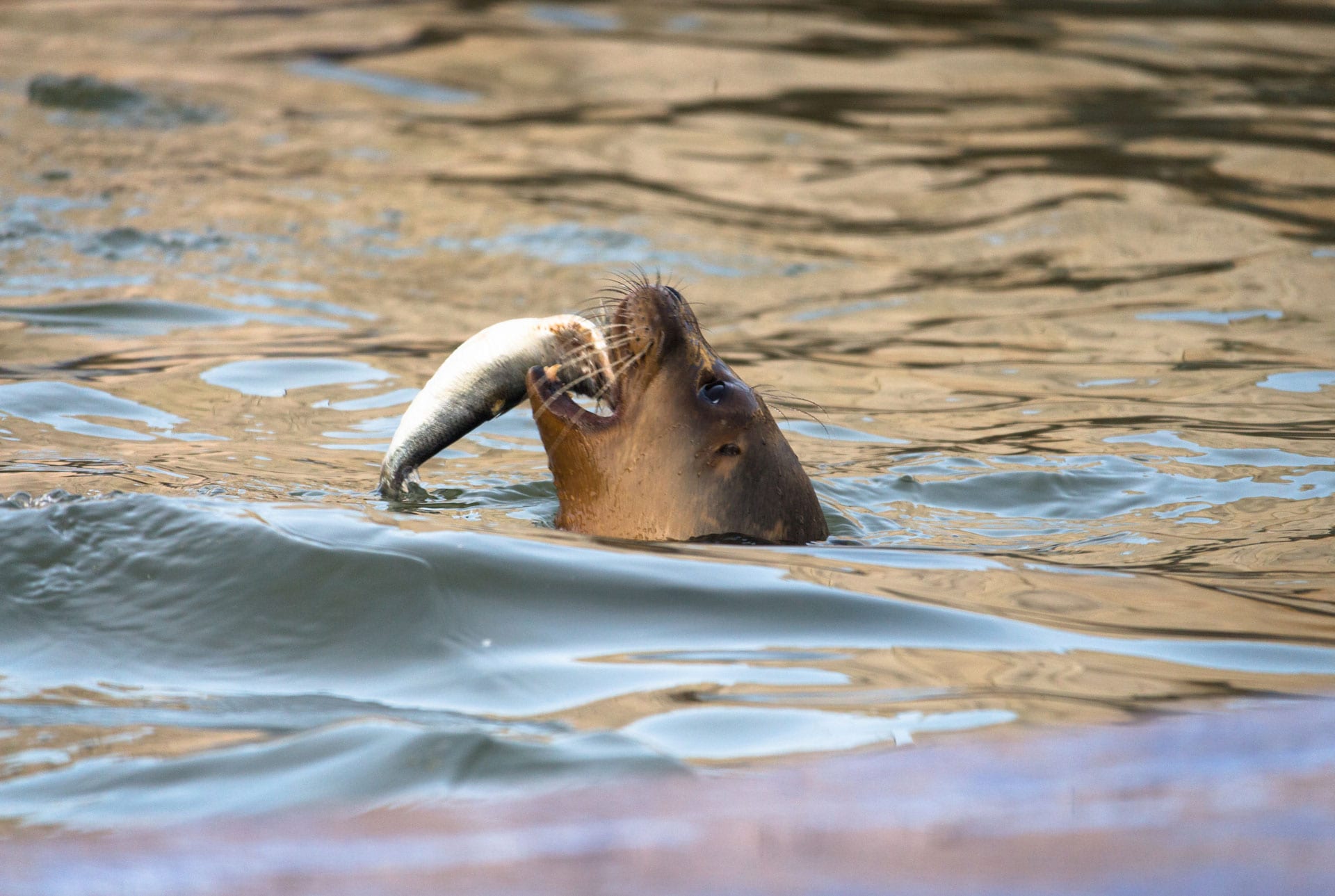Scientists and fishermen team up to film seals in fishing nets
Alex Bocconcelli, Applied Ocean Physics & Engineering
Edited by Véronique LaCapra | August 6, 2020
Fishery bycatch—the accidental entanglement or capture in nets of animals that are not the intended target fish—is a leading cause of injury and death of seals and other marine mammals. Conversely, depredation—the eating of fish from nets by marine predators such as seals—can ruin a commercial fishing catch and cause expensive damage to nets and other fishing gear.
To help prevent such costly interactions, WHOI researcher Alex Bocconcelli has teamed up with scientists at the Center for Coastal Studies and local commercial fishers on Cape Cod to find out exactly what happens when seals and other species invade fishing nets to feed. For the first time, the team has been able to capture underwater video of gillnet fishing in the Northeast U.S., catching seals, spiny dogfish, and other predators on camera as they approach and enter the nets.
Capturing this first-of-its-kind footage has not been easy. The mesh netting that makes up a gillnet reaches ten feet high and extends as wide as the wingspan of a 747 jumbo jet plane. To film depredation in action, Bocconcelli and the team attached an array of five underwater cameras across the top or “headrope” of a gillnet. They also used a remotely operated vehicle (ROV) to take real-time video snapshots of activity in and around the nets to supplement the video from the top-mounted cameras. After the fishers brought up their catch, Bocconcelli and his colleagues examined the fish, recording bite marks and other injuries as well as gear damage.
The team has collected close to 100 hours of video footage, which is still being analyzed. The research has strengthened WHOI’s already good working relationship with the local fishing community, and study results should help identify patterns in the seals’ behavior—such as favorite feeding times—that could enable fishers to minimize interactions between seals and gillnets in the future.

